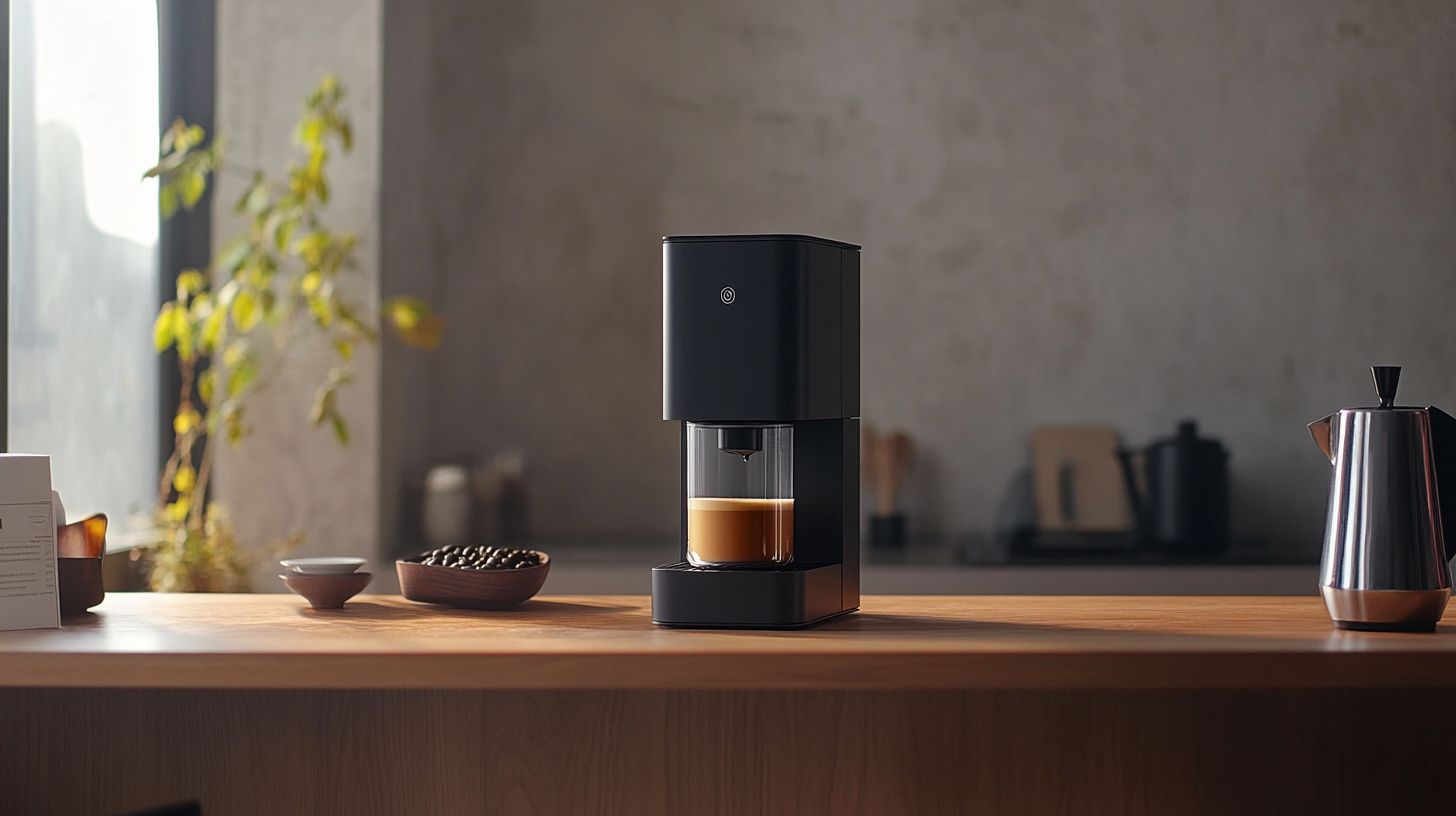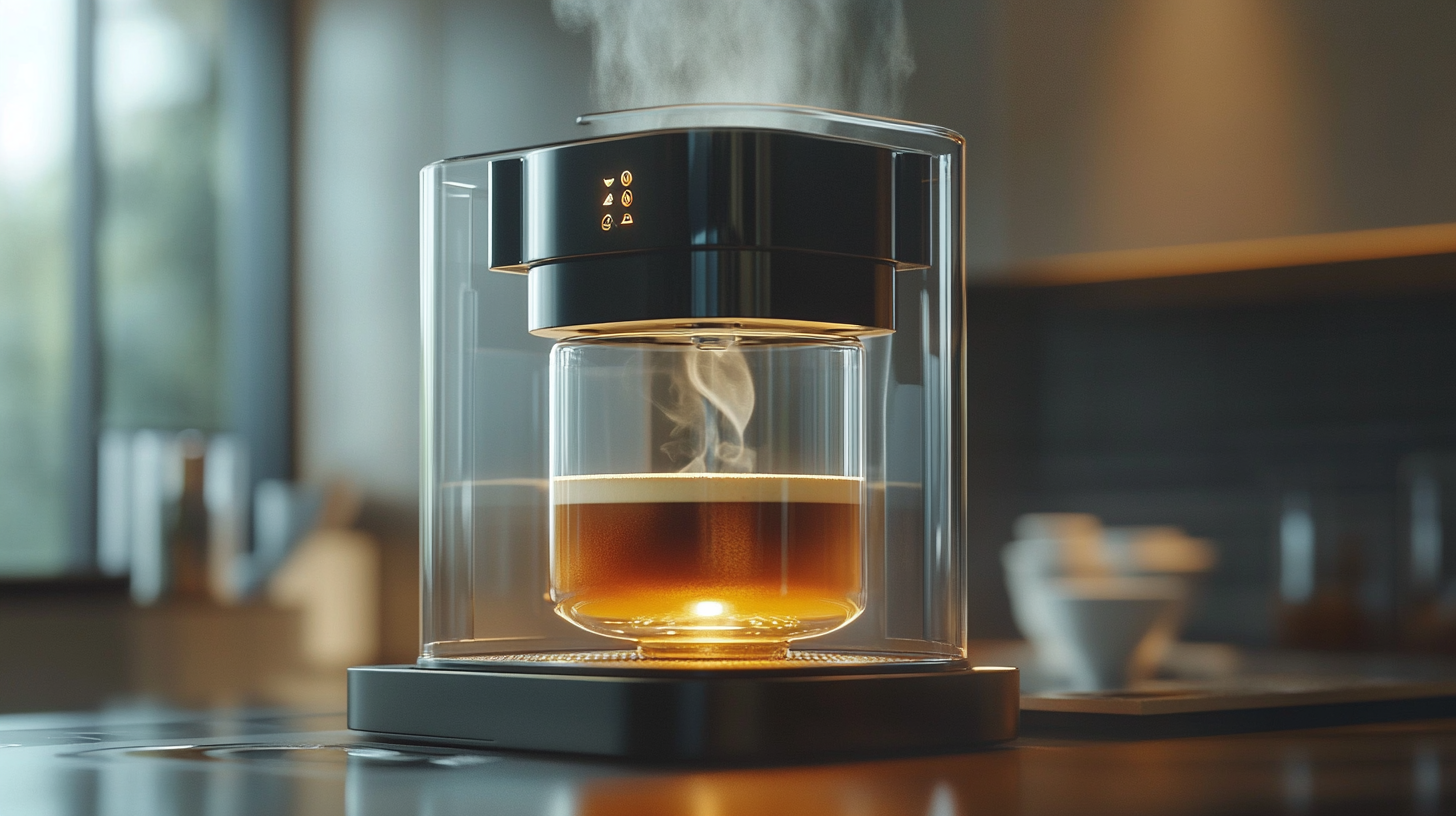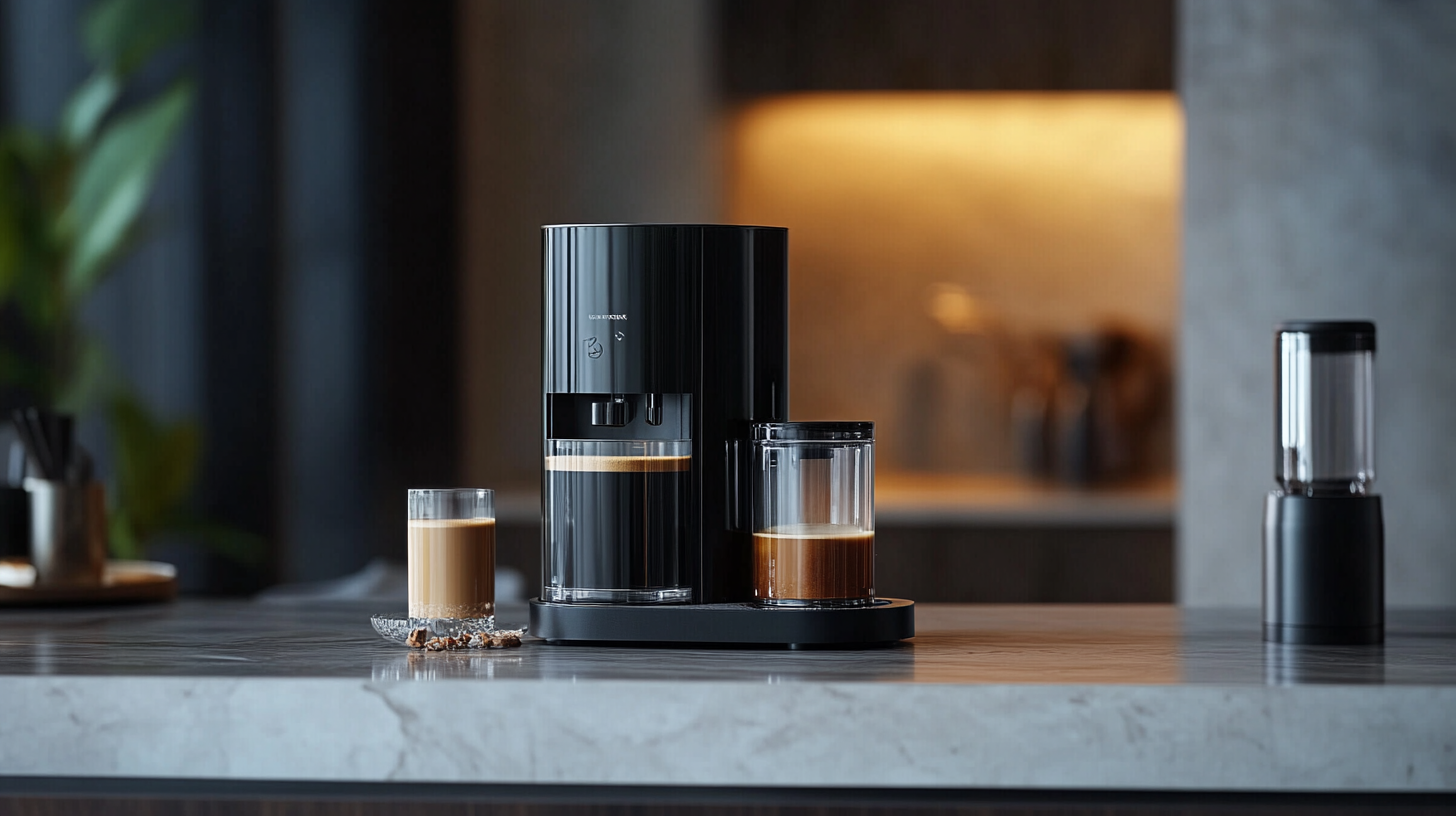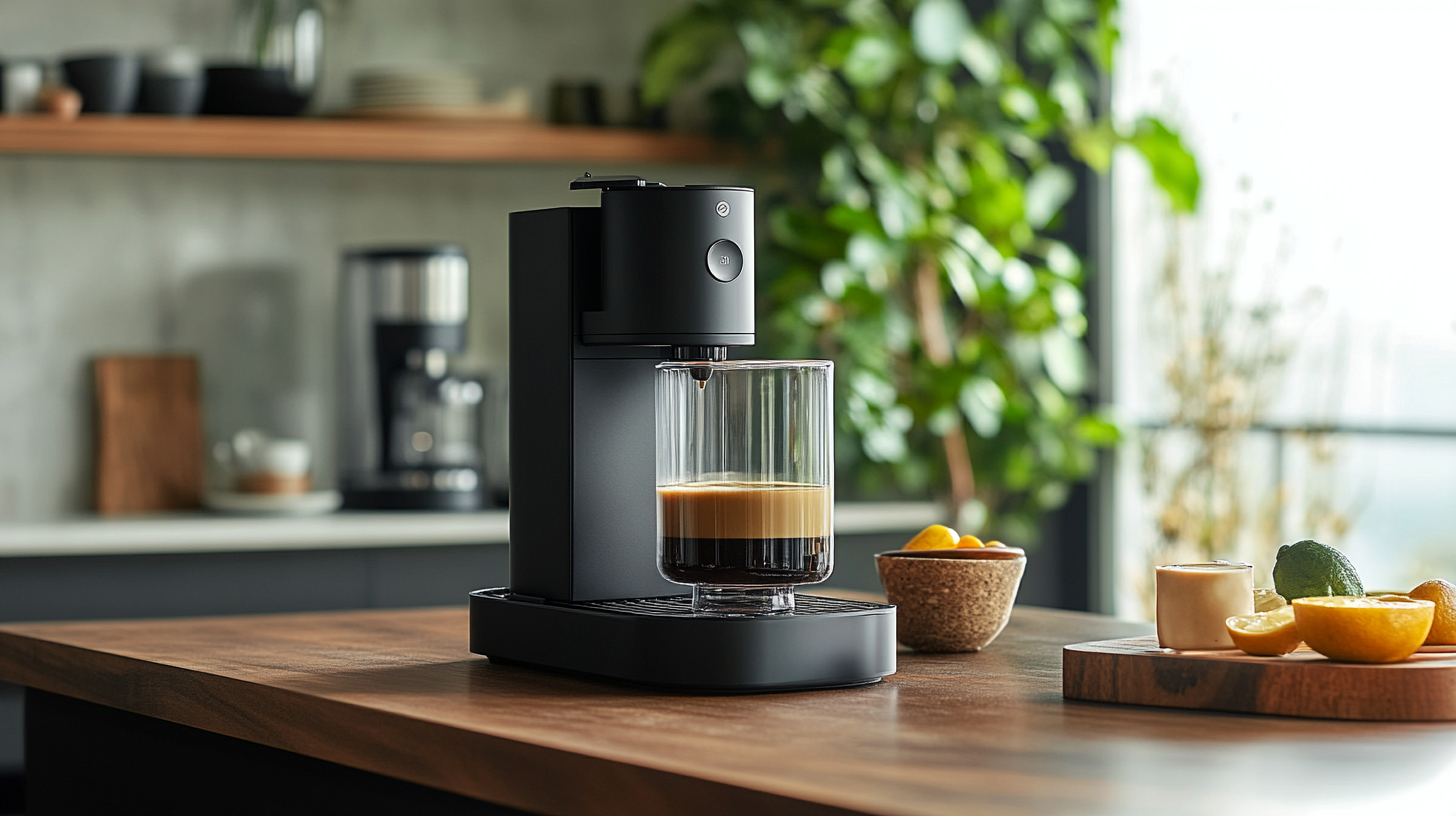Unlocking the Secrets to Perfectly Brewed Automated Coffee at Home
In recent years, the coffee industry has witnessed a profound transformation, with automated coffee machines emerging as game-changers for both home brewers and coffee enthusiasts alike. According to a report by the National Coffee Association, over 40% of American households now own a coffee maker, with automated machines gaining significant traction due to their convenience and consistency. This shift signifies a broader trend where coffee lovers are increasingly seeking precise control over their brewing processes, mirroring the sophistication once reserved for baristas in specialty coffee shops.
Unlocking the secrets to perfectly brewed automated coffee at home is not only about convenience but also about maximizing flavor and aroma to reach the ultimate caffeine experience. A recent study by the Specialty Coffee Association emphasizes that proper brewing techniques can enhance the coffee's soluble flavor compounds, creating a more satisfying cup. By understanding the nuances of automated coffee brewing, from grind size to water temperature, consumers can replicate café-quality results in their own kitchens, making the journey to the perfect brew accessible and achievable for everyone.

The Science Behind Optimal Coffee Extraction and Brewing Temperature
When it comes to brewing the perfect cup of coffee at home, two critical elements stand out: optimal coffee extraction and the brewing temperature. Understanding the science behind these factors can transform your coffee experience, allowing you to enjoy a cup that highlights the rich flavors and aromas of your favorite beans. Optimal coffee extraction refers to the process of dissolving the soluble compounds from coffee grounds into water. Each type of coffee bean has a unique interplay of flavors that's best unlocked at specific extraction times. Over-extraction can lead to bitterness, while under-extraction may result in a sour or weak brew. The key is to find the ideal balance based on the grind size, brew time, and coffee-to-water ratio. For instance, a coarser grind may require a longer brewing time to extract those delightful flavors, whereas a finer grind might need less time to prevent bitterness from developing. Brewing temperature plays a vital role in this extraction process. The optimal temperature for brewing coffee typically falls between 195°F to 205°F (90°C to 96°C). At this range, water is hot enough to extract essential oils and compounds without scorching the coffee, which can produce off-flavors. Too low a temperature can lead to under-extraction, resulting in a lackluster brew. Automated coffee makers often have preset functions to manage both extraction time and temperature, but understanding these parameters can help you make adjustments to perfect your brewing technique at home. Whether you're using a drip machine, a pour-over, or an espresso machine, mastering the science of coffee extraction and temperature can lead to a rewarding cup every time.

Choosing the Right Coffee Beans: Understanding Freshness and Grind Size
When it comes to brewing automated coffee at home, the stakes are high, and the foundation of a great cup lies in the choice of coffee beans. Freshness is paramount; coffee beans start to lose their flavor shortly after roasting. Ideally, you should choose beans that have roasted within the last two weeks. Look for local roasters or specialty coffee shops that offer freshly roasted beans. The date on the packaging is crucial—always opt for the most recent roast to ensure maximum flavor.
Equally important is the grind size of your coffee. Different brewing methods require specific grind sizes to extract the best flavors. For instance, a coarse grind works well for French press coffee, allowing for a full-bodied extraction without bitterness. Conversely, if you're using an espresso machine, a fine grind is essential to facilitate the high-pressure brewing process. Investing in a quality burr grinder allows you to achieve the precise consistency needed for your preferred brewing method, ensuring that each cup of coffee is balanced and rich.
Understanding these elements will not only enhance your brewing experience but also allow you to customize your coffee to perfection. With the right beans and grind size, automated coffee brewing can yield café-quality results right in the comfort of your home.

Automated Brewing Methods: Comparing Single-Serve and Traditional Machines
In the realm of coffee brewing, the choice between single-serve and traditional machines has become increasingly relevant for home enthusiasts. Recent data from the National Coffee Association suggests that around 58% of Americans now prefer coffee made from single-serve machines, highlighting a significant shift towards convenience in our daily routines. With these machines, users can enjoy coffee without the mess and waste associated with traditional brewing methods, making them an attractive option for busy individuals.
Single-serve machines, such as those produced by Keurig and Nespresso, offer a wide variety of coffee options while ensuring consistent quality with each cup. According to a market analysis from Research and Markets, the global single-serve coffee maker market is projected to grow at a CAGR of 5.4% from 2021 to 2026. This growth can be attributed to the increase in demand for personalized brewing experiences, allowing users to explore diverse flavors and roasts from the comfort of their homes.
On the other hand, traditional coffee machines maintain a loyal following among purists who value the crafting process and the ability to brew larger quantities. A report by Statista reveals that traditional drip coffee makers account for roughly 31% of the coffee machine market share in the United States. This method allows for more control over brewing variables, such as water temperature and brew time, leading to a richer and more nuanced flavor profile. As coffee culture continues to evolve, understanding the nuances between these two popular brewing methods will empower consumers to choose the best option for their unique tastes.

The Role of Water Quality in Achieving Barista-Level Coffee at Home
Water quality is often an overlooked factor in brewing the perfect cup of coffee at home. According to the Specialty Coffee Association, the ideal water for brewing coffee should balance minerals and impurities to enhance flavor extraction. Ideally, water should have a total dissolved solids (TDS) level of around 150 ppm, which helps to ensure that the coffee is rich and flavorful without overpowering it with mineral content.
Limited research indicates that water with high mineral content can accentuate certain tasting notes, particularly those found in specialty coffees. For instance, a study published in the Journal of Food Science highlights that water containing calcium and magnesium can improve the extraction of aromatic compounds, resulting in a more balanced cup. Conversely, water with high levels of chlorine or heavy metals can lead to off-flavors and a diluted coffee experience.
Incorporating filtered or bottled water can significantly impact the taste of automated coffee brews. A report from the National Coffee Association suggests that using a simple filtering system eliminates unwanted impurities, thus allowing the natural characteristics of the coffee beans to shine through. By paying close attention to water quality, home brewers can elevate their coffee experience to barista-level perfection, ensuring that each cup is both delightful and consistent.
Mastering Coffee-to-Water Ratios: A Key to Consistent Flavor Profiles
Achieving the perfect cup of coffee at home can often feel like a daunting task. However, by mastering the essential coffee-to-water ratios, you can unlock a world of consistent and delightful flavor profiles. The key lies in understanding that different brewing methods require varying ratios, and getting this balance right is crucial for the ultimate coffee experience.
For a standard brewing method, a common starting point is a 1:15 ratio of coffee to water. This means that for every gram of coffee, you should use 15 grams of water. Adjusting this ratio slightly can significantly influence the strength and taste of your brew. If you prefer a bolder flavor, experiment with a stronger 1:14 or even 1:12 ratio. Conversely, if you desire a lighter taste, you might find a 1:16 or 1:17 ratio suits your palate better.
Utilizing a kitchen scale can help achieve these precise measurements more easily. Additionally, consider the grind size of your coffee beans, as this also affects extraction and flavor. Finer grounds tend to yield a stronger taste, while coarser ones deliver a milder flavor. Take notes on your brewing trials, adjusting the coffee-to-water ratios and grind sizes until you find your perfect cup. Remember, coffee brewing is both an art and a science, and fine-tuning these elements will lead to consistently satisfying results in your morning routine.

